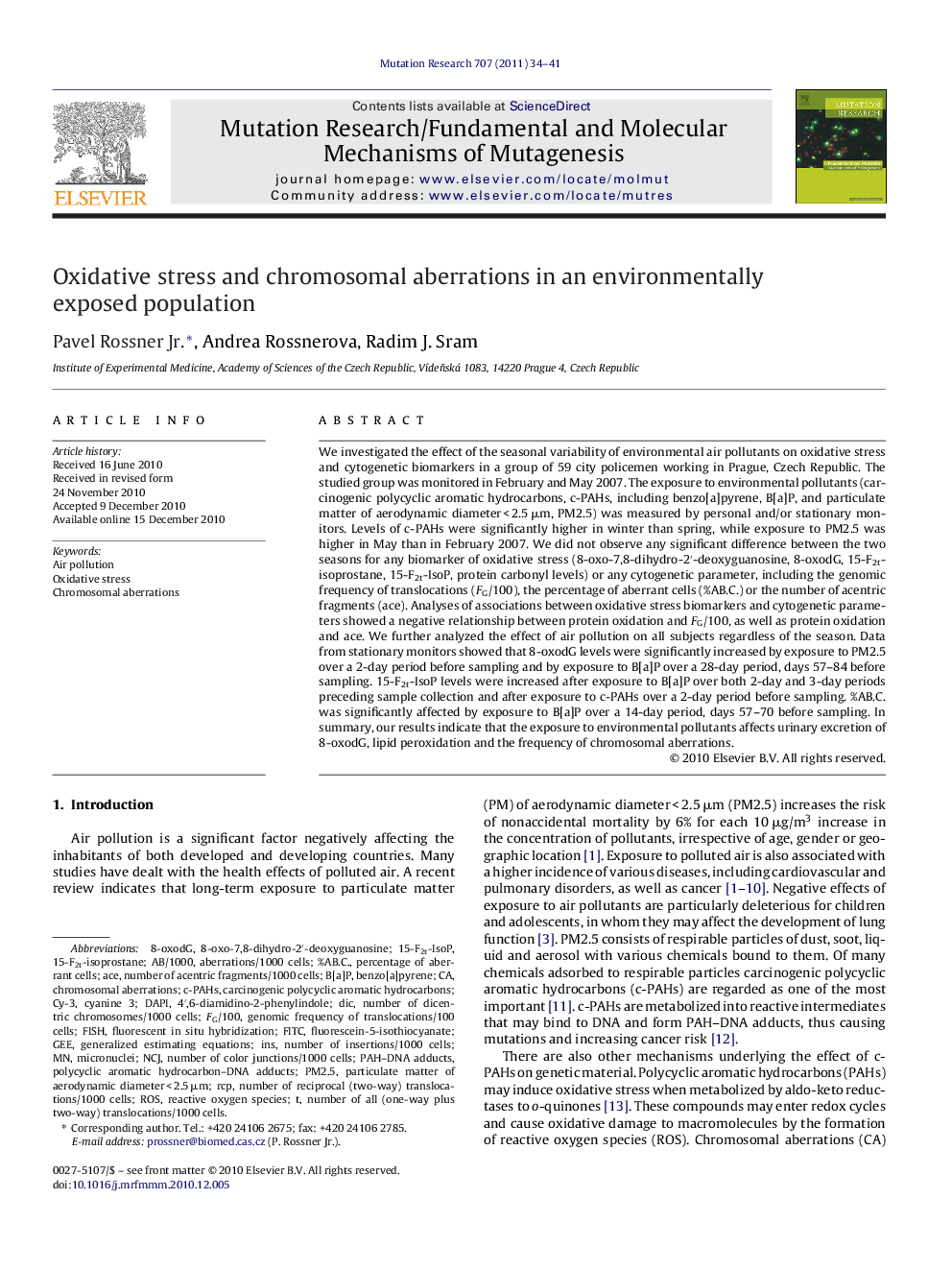| Article ID | Journal | Published Year | Pages | File Type |
|---|---|---|---|---|
| 2146672 | Mutation Research/Fundamental and Molecular Mechanisms of Mutagenesis | 2011 | 8 Pages |
Abstract
We investigated the effect of the seasonal variability of environmental air pollutants on oxidative stress and cytogenetic biomarkers in a group of 59 city policemen working in Prague, Czech Republic. The studied group was monitored in February and May 2007. The exposure to environmental pollutants (carcinogenic polycyclic aromatic hydrocarbons, c-PAHs, including benzo[a]pyrene, B[a]P, and particulate matter of aerodynamic diameter < 2.5 μm, PM2.5) was measured by personal and/or stationary monitors. Levels of c-PAHs were significantly higher in winter than spring, while exposure to PM2.5 was higher in May than in February 2007. We did not observe any significant difference between the two seasons for any biomarker of oxidative stress (8-oxo-7,8-dihydro-2â²-deoxyguanosine, 8-oxodG, 15-F2t-isoprostane, 15-F2t-IsoP, protein carbonyl levels) or any cytogenetic parameter, including the genomic frequency of translocations (FG/100), the percentage of aberrant cells (%AB.C.) or the number of acentric fragments (ace). Analyses of associations between oxidative stress biomarkers and cytogenetic parameters showed a negative relationship between protein oxidation and FG/100, as well as protein oxidation and ace. We further analyzed the effect of air pollution on all subjects regardless of the season. Data from stationary monitors showed that 8-oxodG levels were significantly increased by exposure to PM2.5 over a 2-day period before sampling and by exposure to B[a]P over a 28-day period, days 57-84 before sampling. 15-F2t-IsoP levels were increased after exposure to B[a]P over both 2-day and 3-day periods preceding sample collection and after exposure to c-PAHs over a 2-day period before sampling. %AB.C. was significantly affected by exposure to B[a]P over a 14-day period, days 57-70 before sampling. In summary, our results indicate that the exposure to environmental pollutants affects urinary excretion of 8-oxodG, lipid peroxidation and the frequency of chromosomal aberrations.
Keywords
RCPc-PAHsINS8-oxodGPM2.5FITCDICfluorescein-5-isothiocyanateACE15-F2t-isoprostane15-F2t-IsoPDAPI4′,6-diamidino-2-phenylindole8-oxo-7,8-dihydro-2′-deoxyguanosineB[a]PROSAir pollutionChromosomal aberrationsgeneralized estimating equationsBenzo[a]pyreneOxidative stressGEEmicronucleiCyanine 3fluorescent in situ hybridizationFishcarcinogenic polycyclic aromatic hydrocarbonsReactive oxygen species
Related Topics
Life Sciences
Biochemistry, Genetics and Molecular Biology
Cancer Research
Authors
Pavel Jr., Andrea Rossnerova, Radim J. Sram,
